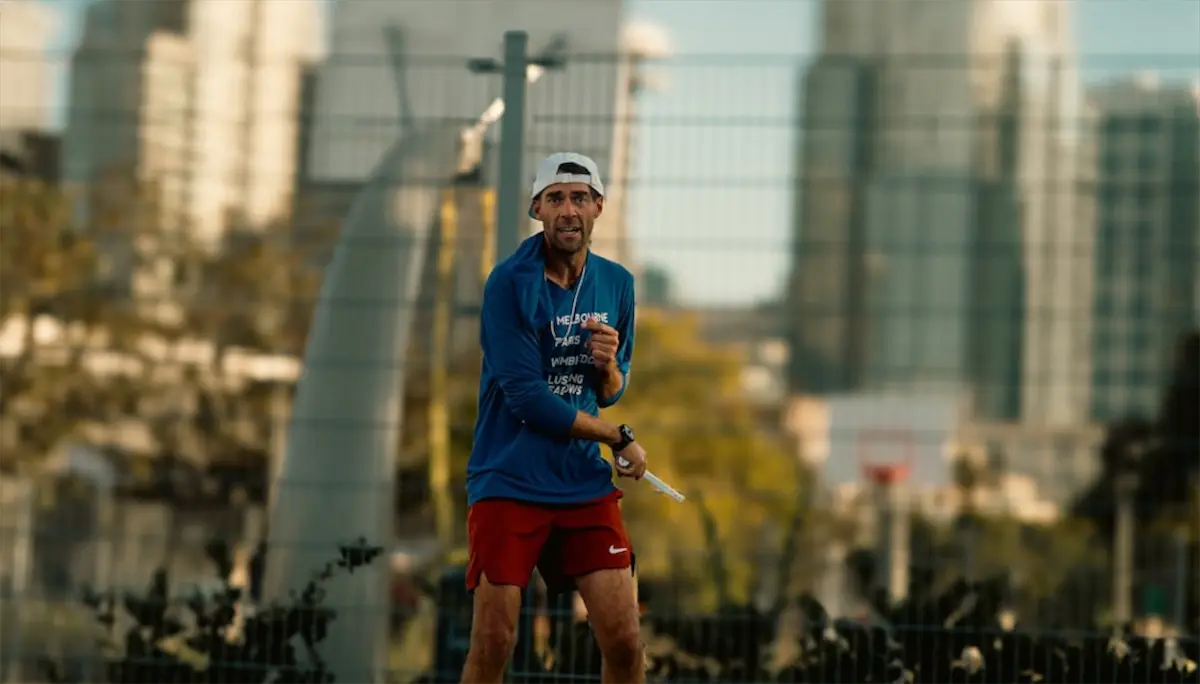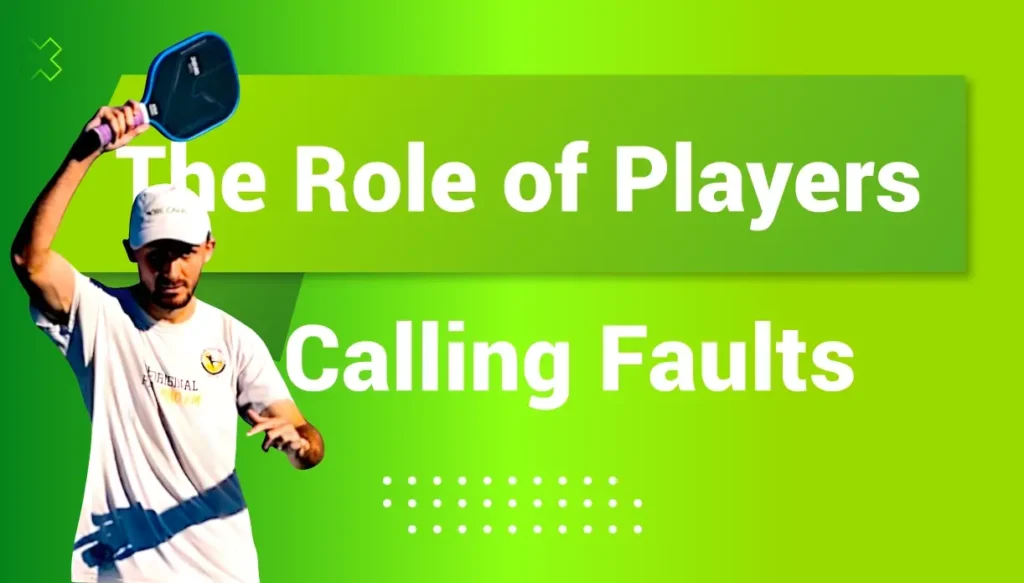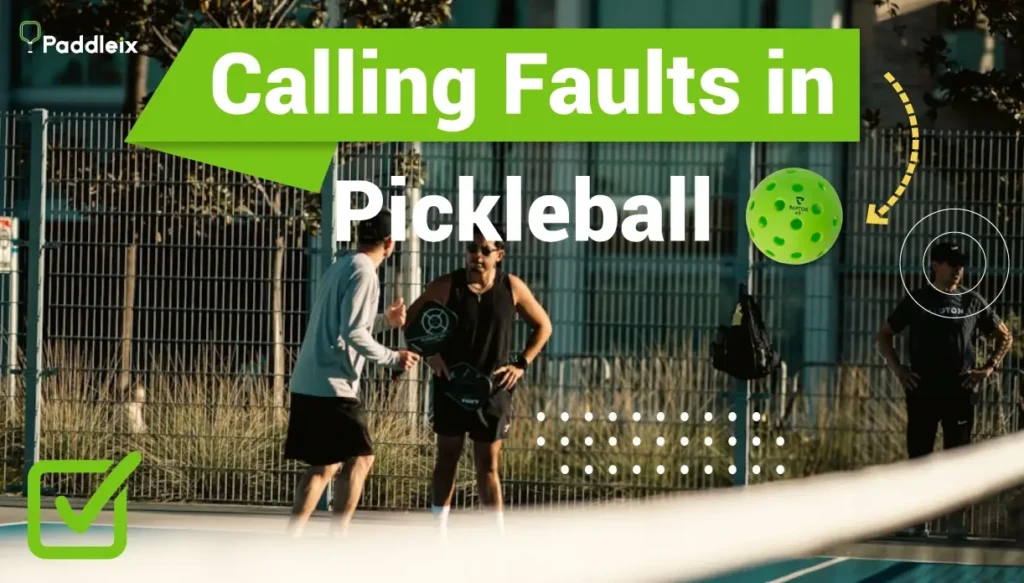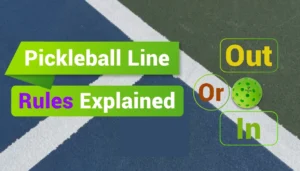Have you ever had that moment on the pickleball court when you weren’t sure if the ball was in? Or maybe you wondered if you stepped a bit too close to the kitchen line.
Faults in pickleball aren’t just about following rules—they’re about keeping the game fair, friendly, and fun for everyone. Calling faults indoors can be tricky, especially with unique indoor challenges like lighting and court boundaries.
Here’s a breakdown of how faults work in indoor pickleball, the roles of players and referees in making calls, and some tips to keep everything fair and friendly on the court.
Why Fault Calls Matter in Indoor Pickleball

Calling faults is a key part of keeping any pickleball game fair. In indoor pickleball, it’s especially important since the conditions can be unique—bright overhead lights, close walls, or even crowded spaces can make faults harder to catch.
Making sure faults are called correctly means both sides play with a fair advantage and get to focus on the game itself.
I’ll never forget a match where a strong glare made it impossible to see if a close shot was in or out. We had to trust each other’s calls, and it reminded me that good sportsmanship and honest fault calls are the backbone of pickleball.
Want to know what really happens when play is stopped mid-rally? Check out this quick guide on key stoppage moments and learn when the ball is considered out of play.
Here’s how to handle it right!
1. Understanding Faults in Indoor Pickleball
Before we jump into who makes the calls, let’s get clear on what a fault actually is. A fault in pickleball is basically any action that breaks the rules of play, causing a point to end and the opposing team to gain a point or the serve.
Common Indoor Faults Include:
- Foot Faults: Stepping over the baseline while serving or entering the kitchen on a volley.
- Out-of-Bounds Shots: Hitting the ball outside the court’s boundary lines.
- Double Bounce: Allowing the ball to bounce twice on one side of the court.
- Net Violations: Touching the net with your paddle or body during play.
In indoor settings, these faults can be harder to catch. For example, close walls might affect players’ foot positioning, or lighting can make line calls tricky.
If you’re not fully familiar with the specific differences, it’s worth reviewing the official indoor pickleball rules to understand how they vary from outdoor play.
2. The Role of Players in Calling Faults

In most recreational games, it’s up to the players to call their own faults, especially when no referee is around. Self-calling faults might sound intimidating, but it’s a core part of pickleball’s culture and keeps the game respectful and honest.
Player-Called Faults to Watch For:
- Out-of-Bounds Shots: If you clearly see your shot land outside the line, it’s your call to make. This keeps things fair and saves time in casual games.
- Foot Faults: This includes stepping over the baseline on a serve or into the kitchen while volleying. In doubles, it’s helpful if your partner also keeps an eye on foot placement to help catch any slips.
- Double Bounces: The ball only gets one bounce per side! If you realize it bounced twice on your side, it’s your responsibility to call it.
Etiquette Tips for Self-Calling Faults:
- Be Honest: Make calls fairly, even if it’s a tough one to accept on yourself. It’s all part of good sportsmanship.
- Communicate Quickly: Call the fault immediately so everyone is clear on what happened.
- Stay Calm: If there’s ever a dispute, stay respectful. The goal is to keep things friendly.
Personal Story: I once played in a game where my foot just barely slipped into the kitchen on a volley. No one else noticed, but I called the fault on myself.
At first, I thought, “Did I just cost us a point?” But owning that call made me feel better about my game and reminded me of the honesty pickleball encourages.
3. The Role of Referees in Calling Faults
When you’re in a tournament or more formal setting, referees take on a big role in calling faults. Referees are there to keep an eye on the game, especially for faults players might not be able to see themselves, like a line call on the opposite side of the court.
Key Responsibilities of Referees:
- Line Calls: Referees are there to call in or out on close shots near boundary lines.
- Kitchen Violations: They monitor players for any foot faults near the kitchen, especially during volleys.
- Timing Faults: Referees track the 10-second rule for serving. If a player takes too long, they call a fault.
Referees are trained to observe the game neutrally and calmly, which means they’re there to make calls based on what they see. In close matches, having a referee can help resolve disputes and keep the game moving smoothly.
Tip: In tournament games, trust the referee’s call. They’re there to keep things fair, and it helps avoid unnecessary arguments or delays. If you disagree, remember that they have the final say.
4. Handling Disputes and Fault Disagreements
Disagreements over fault calls can happen, even in the most friendly games. So, what do you do when it’s a close call and players don’t agree?
When Players Disagree on a Call:
- Stay Calm: The number one rule here is to stay calm. Tensions can run high in a competitive game, but handling the dispute calmly shows respect for everyone on the court.
- Talk It Out: If both teams are unsure, discuss the call briefly. If no one is certain, a common practice is to replay the point.
When a Referee Is Present:
- Trust the Referee’s Judgment: If there’s a referee, they’re the final authority on the court. They may overrule a player’s call if they have a better view.
- Follow the Call: Respect the referee’s decision even if it doesn’t go your way. Keeping a positive attitude is key to enjoying the game.
In one match, my opponent and I had a disagreement on whether my shot was in or out. We were both certain about our own calls, so we decided to replay the point.
It kept the game light and made sure no one felt unfairly treated. In pickleball, it’s all about compromise and keeping the energy friendly.
5. Practical Tips for Players on Calling Faults Fairly
Here are a few tips I’ve picked up to make fault calling easier and more accurate, especially in indoor settings where some conditions can add extra challenges:
- Position Yourself Well: Standing near the baseline or side lines can give you a better angle for calling in or out. I try to stay aware of my position during points so I can call faults confidently.
- Communicate Quickly: Don’t delay calling a fault if you see it—call it right away to avoid any confusion.
- Accept Faults with Grace: Even when calls don’t go your way, keep a positive attitude. It’s easy to get frustrated, but I remind myself that faults are part of the game, and they keep things fair.
A Quick Story: Once, during a match, I was on a roll and didn’t realize I’d stepped over the baseline on my serve. My opponent called the fault, and even though I felt a bit annoyed, I quickly accepted it and moved on.
Later, I realized they’d been totally right, and that call kept our game fair.
The Importance of Fair Fault Calls in Indoor Pickleball
Calling faults fairly is a fundamental part of keeping indoor pickleball games balanced and enjoyable. Whether you’re playing casually or in a tournament, both players and referees have roles in ensuring the game’s fairness.
Knowing the rules, calling faults honestly, and handling disputes with respect are what make pickleball such a great sport.
So next time you’re on the court, be ready to make fair calls, respect your opponent’s calls, and keep the game fun for everyone involved. Got your own stories about fault calls?
I’d love to hear them—share them below or connect with me online!



